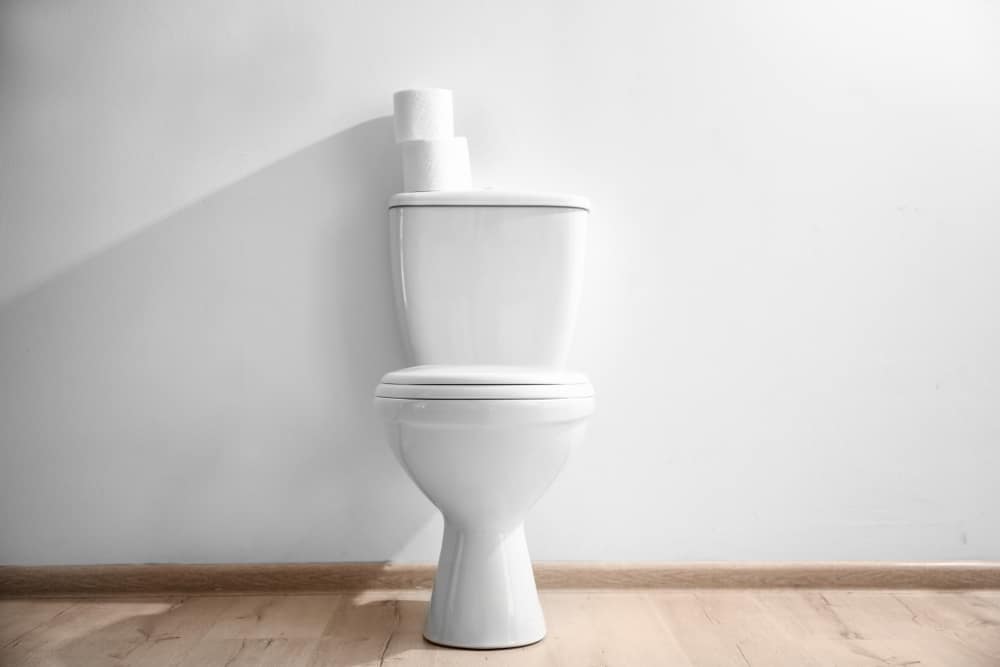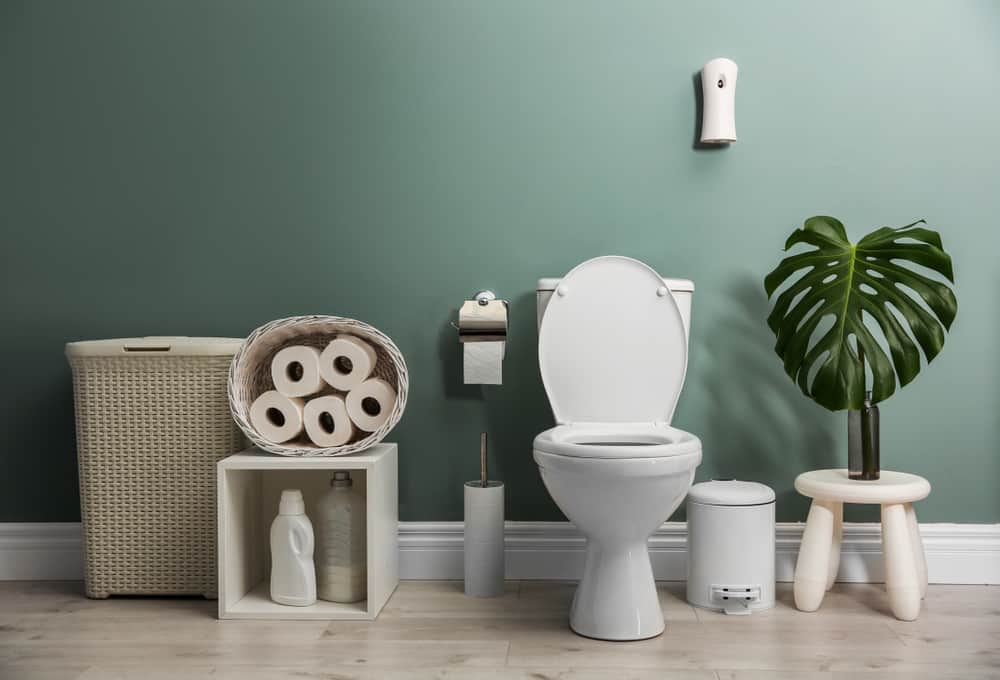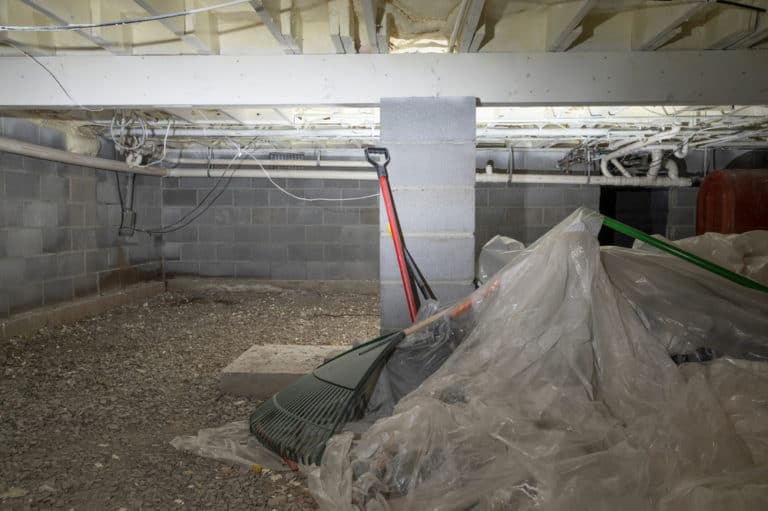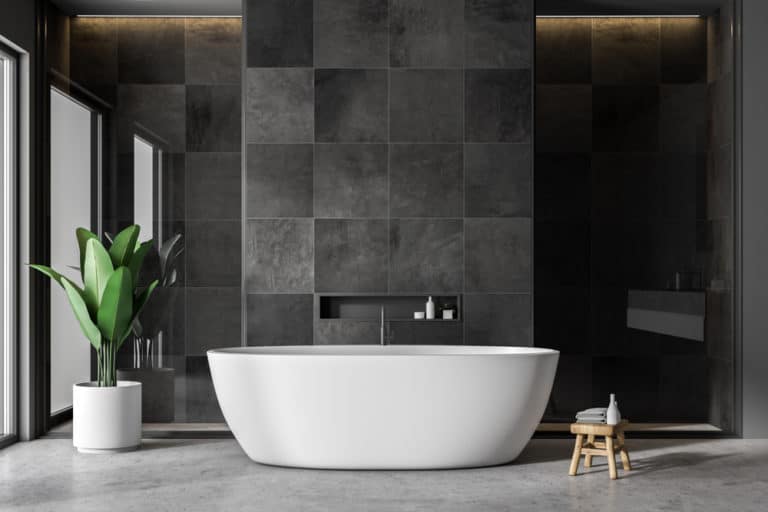Should A Toilet Be Separate From The Bathroom?
Whether you are building from scratch or you are remodeling, you have the chance to create your dream home. If you have this opportunity: congratulations! However, we are sure you have some questions about the best design. One perennial question when designing a home is: should the toilet be separate from the bathroom?
Proponents of separating the toilet from the bathroom say it enhances privacy and hygiene and enhances resale value. Opponents say that it creates problems for disabled users, can hinder the hygienic washing of hands, and increases building costs. Some options compromise between the two.
Deciding whether or not to separate the toilet from the bathroom or not is a complicated issue, and depends on your situation and needs. There are several factors to consider, and we will give this attention. However, there is a possible compromise in the shape of a water closet with a sink.
Arguments For Having A Toilet Separate From The Bathroom
When builders first incorporated flush toilets into homes in the modern era, they were kept separate from bathrooms, which were rooms for washing oneself. Later, American builders started combining the two into one larger room, mainly to save space.
However, separate water closets or half baths are making a comeback, especially in more upmarket homes. This arrangement has certain advantages, which we will examine.
Separating Toilet And Bathroom Allows Multiple Users
If you only share your bathroom with your partner and you both have relaxed bathroom boundaries, you may not mind having the toilet and bathroom together.
However, it is possible to have too much togetherness, and having the toilet and the shower or bath sharing the same room can quickly create arguments and tension.
And suppose you have kids, especially older kids. Separating the toilet from the bathroom is an advantage, allowing one person to use the toilet while someone else is showering or brushing their teeth without intruding on each other’s privacy or making it necessary for one person to wait.
And if you have guests over to stay, they will appreciate the privacy afforded by a separate toilet and bathroom!
Separating Toilet And Bathroom Enhances Relaxation
Many people like to soak in a nice warm bath at the end of a long day, possibly sipping some wine. This evening ritual helps you relax and recharge after the day has taken it out of you.
However, having to stare at a toilet while doing so detracts from the experience, to say nothing of having someone use it while in the tub. The sights, noises, and odors created by having someone using the toilet while you are soaking are not conducive to relaxation.
Keep the toilet in a separate room to enhance your bathroom’s function as a place to relax and unwind after work or running around after the kids.
Separating Toilet And Bathroom Enhances Hygiene
Having a toilet in the bathroom is not conducive to good hygiene. When you flush the toilet, germs fly into the air and can settle on your toothbrushes and in your bath or shower. Additionally, toilets are a source of odors.
Keeping the toilet separate from the bathroom keeps germs and odors in the toilet room and away from the space where you clean yourself.
The Japanese have traditionally kept toilets separate from bathrooms and have, as a result, rarely experienced outbreaks of cholera or typhoid.
Separating Toilet And Bathroom Improves Resale Value
Although there are costs associated with remodeling a bathroom to separate the toilet from it, they will be more than offset by the enhanced resale value of your home.
The National Association of Home Builders lists a separate water closet as the fourth most desirable feature in a primary bathroom, with 22 percent of recent or potential home buyers listing this amenity as an essential feature and a further 43 percent listing it as desirable.
And it’s not only upmarket homes that this applies to; increasingly, water closets are seen as desirable in middle-class homes. Until recently, they were more common in overseas homes. However, they are increasingly common in American homes.
Arguments Against Having A Toilet Separate From The Bathroom
Despite the reasons listed above for separating the toilet from the bathroom, there are still many proponents of the concept of having the toilet inside the bathroom. They have some compelling points to make, and we will examine them.
Separating Toilet And Bathroom Can Take Up Space
A significant reason for combining toilets into bathrooms in the first place was to save space. Every fixture in the bathroom requires a certain minimum amount of space around it to comply with code and generally requires somewhat more space around it for users to be comfortable.
Putting the toilet into a separate room means that you have to find enough room around it in a room of its own, rather than making use of space in a larger room. The walls between the toilet and the rest of the house also take up floor space, eating into the space available for the toilet’s users, and potentially creating a claustrophobic feel to the toilet room.
The combined effect is that having the toilet separate from the bathroom can take up valuable space and create problems with specific home layouts. Combining the toilet into the bathroom generally results in more optimal use of space.
Separating Toilet And Bathroom Can Hinder Disabled Users
Because disabled users generally require more space around a toilet, especially if they are users of wheelchairs or walkers, a separate toilet can interfere with their needs.
While the code minimum for space in front of a toilet is only 21 inches, and the minimum clearance to the nearest side wall or partition is only 15 inches, wheelchair users should have 48 inches minimum clearance in front of a toilet and 18 inches minimum clearance on the side.
Such clearances can be difficult to provide in a separate toilet room, especially if the toilet is facing the door. Someone using a wheelchair could find it impossible to close the door, preventing them from having privacy when using the toilet.
Many toilet rooms are too small for wheelchair users to use at all.
It is possible to mitigate this problem by building the toilet room with enough space for disabled users, but this leads to the problem mentioned above of the toilet room taking up valuable floor space inside the home.
If a family member uses a wheelchair, or requires disability-friendly features such as handrails, consider keeping the toilet inside the bathroom.
Separating Toilet And Bathroom Can Reduce Cleanliness
For hygiene reasons, it is excellent practice to wash one’s hands immediately after using the toilet to reduce fecal-oral transmission of disease. A separate toilet room without a sink means that users have to exit one room and enter another, which other people may be using.
The result is that in this situation, many users will leave the toilet without washing their hands. Doing so is not conducive to good hygiene. Placing the toilet in the bathroom makes it much more likely that people will wash their hands after using the toilet.
You can mitigate this problem by placing a sink in the toilet room, albeit at the cost of taking up more space. You can reduce the space requirements of a toilet room by installing a wall toilet and a wall sink.
Separating Toilet And Bathroom Increases Building Costs
If you are going to separate the toilet from the bathroom, you may be able to get away with just building a wall to partition the toilet off from the rest of the bathroom. However, it is much more likely that you will have to change the plumbing supply to accommodate the new arrangement.
In addition, you will have to supply light and ventilation (in the form of a fan or a window) to the toilet room and install a door to the room.
These things add up, leading to increased building costs for having the toilet separate from the bathroom.
Maybe you aren’t planning to sell soon and are therefore not concerned about increasing the resale value of your hom. Or you may own a down-market home. In that case, you may find the cost of separating the toilet from the bathroom is a significant factor.
It would be wise not to compromise one’s budget when remodeling a home.
Compromises When Separating A Toilet From A Bathroom
You have likely decided whether you wish to have the toilet in the bathroom or have it separate. However, be aware that there are ways you can create a compromise between the two options, and one of these compromises might better suit your particular needs and the layout of your house.
How You Can Half Separate A Toilet And Bathroom
A half to three-quarter wall can separate a toilet from the rest of the bathroom, creating some of the advantages of a separate toilet, such as privacy, while costing less and taking up less space than a fully-separate room. However, this option does not contain germs, odors, and noises like an entirely separate toilet does.
Depending on your bathroom’s layout, you may be able to more fully separate the toilet at one end of the bathroom by creating a full partition using shelving. This compromise nicely preserves most of the advantages of a fully-separate toilet room while taking up less space and costing less.
However, whether you can make use of these compromise options without remodeling the plumbing layout of your bathroom will depend on where your toilet is currently located.
How A Water Closet Can Be A Suitable Compromise
Although the term ‘water closet’ may refer to a space containing only a toilet, many real estate agents use it as a synonym for a half bath or powder room, including a sink or vanity.
It sometimes refers to a semi-detached room with half walls adjacent to the main bathroom. Such a space can create a suitable compromise between having the toilet room separate from the bathroom and having it be in the same room.
Use a wall toilet and a wall sink to help to save space.
By carefully playing with the layout, you may find it is possible to create such an enclosure in a way that makes it more suitable for disability-friendly features such as handrails. If you have an elderly or disabled member of the family or are looking to increase your home’s resale value, this is an excellent option to consider.

How Can A Room Within A Room Keep Toilet And Bathroom Apart?
Some hotels compromise between having the toilet separate and being a part of the bathroom by creating a ‘room within a room,’ a glass enclosure around the toilet located inside the bathroom. This enclosure may either be made of clear glass or frosted glass.
This option creates some degree of privacy for the toilet user, allowing two people to use the bathroom simultaneously, and adds a touch of luxury to the bathroom. It can make your bathroom feel as if you are on vacation.
It also has the advantage that you do not need to install a door to a separate room, making it a more affordable option.
The disadvantages of this solution are that glass is transparent, meaning that you will still see the toilet and anybody on it. What’s more, glass is thin and therefore does not have the acoustic insulating properties of walls. You will still hear what is going on inside the toilet enclosure. However, such an enclosure does help to contain germs and odors.
Conclusion
Hopefully, you now understand the advantages and disadvantages of separating a toilet from a bathroom and enabled you to decide which option you want to go for in your home.
We lean toward having at least some degree of separation between the two, especially as more and more home buyers are looking for a separate water closet in the home they buy. However, you should decide which option to choose based on your needs.
References
- https://www.domain.com.au/living/should-the-toilet-have-its-own-room-or-not-20160419-go9jrg/
- https://www.realtor.com/advice/buy/what-is-a-water-closet/
- https://www.thespruce.com/bathroom-space-design-1821325
- https://www.thespruce.com/powder-room-ideas-4144234
- https://www.houzz.com/discussions/4865227/does-a-separate-room-for-the-toilet-in-the-master-bathroom-make-sense
- https://www.quora.com/Home-Improvement-Is-it-better-to-have-the-toilet-in-the-bathroom-with-the-bath-and-shower-etc-or-on-its-own







